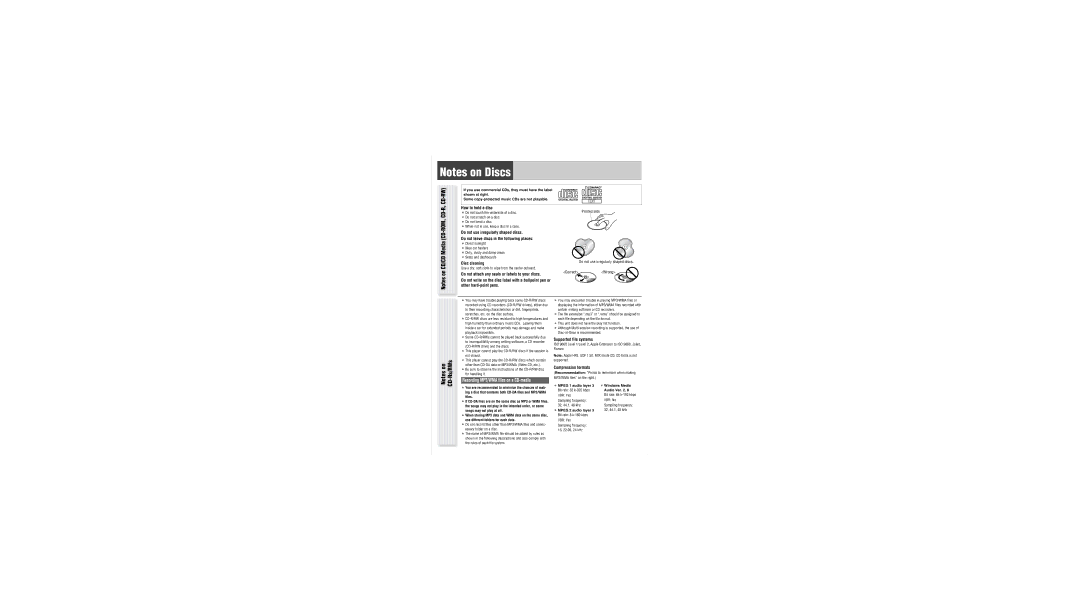
Notes on Discs
Notes on CD/CD Media
If you use commercial CDs, they must have the label |
|
shown at right. |
|
Some | TEXT |
| |
How to hold a disc |
|
¡Do not touch the underside of a disc. | Printed side |
¡Do not scratch on a disc. |
|
¡Do not bend a disc.
¡When not in use, keep a disc in a case.
Do not use irregularly shaped discs.
Do not leave discs in the following places:
¡Direct sunlight
¡Near car heaters
¡Dirty, dusty and damp areas
¡Seats and dashboards
Disc cleaning | Do not use irregularly shaped discs. |
|
Use a dry, soft cloth to wipe from the center outward.
Do not attach any seals or labels to your discs. | <Correct> | <Wrong> |
|
|
Do not write on the disc label with a ballpoint pen or other
Notes on
¡You may have trouble playing back some
¡
¡Some
¡This player cannot play the
¡This player cannot play the
¡Be sure to observe the instructions of the
Recording MP3/WMA files on a CD-media
¡You are recommended to minimize the chances of mak- ing a disc that contains both
¡If
¡When storing MP3 data and WMA data on the same disc, use different folders for each data.
¡Do not record files other than MP3/WMA files and unnec- essary folder on a disc.
¡The name of MP3/WMA file should be added by rules as shown in the following descriptions and also comply with the rules of each file system.
¡You may encounter trouble in playing MP3/WMA files or displaying the information of MP3/WMA files recorded with certain writing software or CD recorders.
¡The file extension “.mp3” or “.wma” should be assigned to each file depending on the file format.
¡This unit does not have the play list function.
¡Although
Supported file systems
ISO 9660 Level 1/Level 2, Apple Extension to ISO 9660, Joliet, Romeo
Note: Apple HFS, UDF 1.50, MIX mode CD, CD Extra is not supported.
Compression formats
(Recommendation: “Points to remember when making MP3/WMA files” on the right.)
¡MPEG 1 audio layer 3 | ¡Windows Media |
Bit rate: 32 | Audio Ver. 2, 8 |
VBR: Yes | Bit rate: 64 |
Sampling frequency: | VBR: No |
32, 44.1, 48 kHz | Sampling frequency: |
¡MPEG 2 audio layer 3 | 32, 44.1, 48 kHz |
Bit rate: 8 |
|
VBR: Yes |
|
Sampling frequency: |
|
16, 22.05, 24 kHz |
|
|
|
